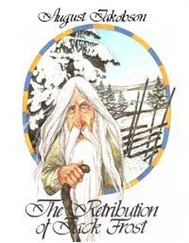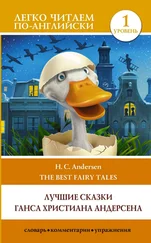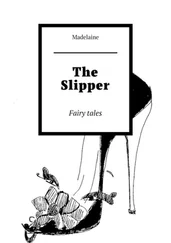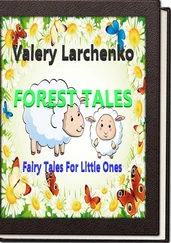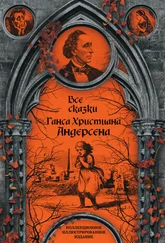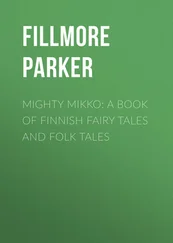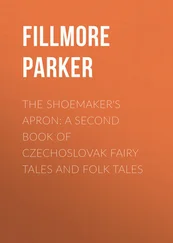Ганс Андерсен - Fairy Tales
Здесь есть возможность читать онлайн «Ганс Андерсен - Fairy Tales» весь текст электронной книги совершенно бесплатно (целиком полную версию без сокращений). В некоторых случаях можно слушать аудио, скачать через торрент в формате fb2 и присутствует краткое содержание. Жанр: Старинная литература, на английском языке. Описание произведения, (предисловие) а так же отзывы посетителей доступны на портале библиотеки ЛибКат.
- Название:Fairy Tales
- Автор:
- Жанр:
- Год:неизвестен
- ISBN:нет данных
- Рейтинг книги:4 / 5. Голосов: 1
-
Избранное:Добавить в избранное
- Отзывы:
-
Ваша оценка:
- 80
- 1
- 2
- 3
- 4
- 5
Fairy Tales: краткое содержание, описание и аннотация
Предлагаем к чтению аннотацию, описание, краткое содержание или предисловие (зависит от того, что написал сам автор книги «Fairy Tales»). Если вы не нашли необходимую информацию о книге — напишите в комментариях, мы постараемся отыскать её.
Fairy Tales — читать онлайн бесплатно полную книгу (весь текст) целиком
Ниже представлен текст книги, разбитый по страницам. Система сохранения места последней прочитанной страницы, позволяет с удобством читать онлайн бесплатно книгу «Fairy Tales», без необходимости каждый раз заново искать на чём Вы остановились. Поставьте закладку, и сможете в любой момент перейти на страницу, на которой закончили чтение.
Интервал:
Закладка:
THE BRONZE PIG (METALSVINET, 1842)
Andersen conceived this tale in 1833 and 1834 while visiting Florence, where he saw the statue of the bronze boar on the Via Porta Rossa. The tale concerns the miraculous development of a poor, oppressed boy into an artist, a motif that appears in several of Andersen’s tales. It was first published in his travel book A Poet’s Bazaar (1842). He may have based the story on the life of Danish painter Wilhelm Bendz, who was born in 1804 in Odense and died in Italy in 1832.
THE ROSE ELF (ROSEN-ALFEN, 1839)
This tale, whose title is sometimes translated as “The Rose Fairy,” was based on a story taken from Boccaccio’s Decameron.
THE PIXIE AT THE GROCER’S (NISSEN HOS SPEKHØKEREN, 1852)
Andersen was often concerned with the conflict between materialism and art that is mirrored in the pixie’s existential dilemma. Pixies—intermediaries between the natural and the supernatural worlds—are important characters in Danish folklore. They appear in Andersen’s “The Traveling Companion” and “The Hill of the Elves,” among other works.
IB AND LITTLE CHRISTINE (IB OG LILLE CHRISTINE, 1855)
Andersen wrote this tale during a period of depression. It is a sentimental and moralistic picture of a poor young man who is dedicated to the simple, pure life in the country, while his childhood sweetheart, Christine, is corrupted by the materialism of the big city.
THE ICE MAIDEN (IISJOMFRUEN, 1862)
This tale, written while Andersen was visiting Switzerland, bears a strong resemblance to Johann Peter Hebel’s “Unverhofftes Wiedersehen” (“Unexpected Reunion,” 1811) and E. T. A. Hoffmann’s “Die Bergwerke zu Falun” (“The Mines at Falun,” 1819), in which a young miner is captured by a dangerous queen of an underground realm on his wedding day. His petrified body is found many years later by his former bride, now an old woman.
The allure of an erotic, mysterious woman, a common motif in romantic fairy tales, was often set in opposition to a safe, bourgeois life. Andersen’s tale is less about this dichotomy and more about the tragedy of a young man whose rise in society is undermined by immoral forces. Even though Rudy is a good and talented person who trusts in God, he does not succeed. As Andersen comments, “God gives us the nuts, but he doesn’t crack them open for us.” The episode about the eagle’s nest, Rudy’s marital test, was an actual story told to Andersen by the Bavarian poet Koppel. Andersen was originally going to write just the episode about the eagle’s nest but changed his mind after reading a travel book about Switzerland, in which he came across the incident concerning the bridal couple.
EVANGELICAL AND RELIGIOUS TALES
THE SNOW QUEEN (SNEEDRONNINGEN, 1845)
Although Andersen had already introduced the Christian quest tale in “The Traveling Companion,” published in his second collection of tales, it was not until “The Snow Queen” that he fully developed this motif; in this tale he uses children as his main characters. The prologue, which concerns the origins of evil in the world, prepares the reader for the conflict between the good-hearted children, Kai and Gerda, and the demonic Snow Queen. It is only because of Gerda’s purity of soul and the help of angels that she is able to rescue Kai. The tale’s moral message is that only those who have faith in God can triumph over the most difficult obstacles in life. This evangelical message was generally omitted or glossed over in late-twentieth-century adaptations, especially cinematic ones; instead the spiritual theme was transformed into a secular one about the power of love. Andersen combined pagan beliefs with an unusual interpretation of Christianity in this tale, but the tone and style overwhelmingly emphasize the theme of Christian salvation.
THE RED SHOES (DE RØDE SKO, 1845)
In his autobiography of 1847 Andersen relates that an incident from his childhood influenced the writing of this tale. On the occasion of his confirmation he was given a new pair of boots that squeaked when he walked on the church floor. The squeaking drew the attention of the congregation, and Andersen was pleased that everyone would notice that he was wearing his first pair of new boots. At the same time, he was ashamed because his thoughts were turned away from God. It is not clear whether Andersen specifically referenced this childhood incident in “The Red Shoes,” but the stark Christian message is clear. Karen’s alleged vanity is punished so mercilessly in the name of the Lord that the story has often been criticized for its misogynism.
THE LITTLE MATCH GIRL (DEN LILLE PIGE MED SVOVLSTIKKERNE, 1845)
Andersen wrote this tale as a commission from the magazine Dansk Folkekalender. While traveling outside Copenhagen, he received a letter from the publisher, asking him to address one of three pictures that he enclosed. Andersen chose a drawing by Danish painter J. T. Lundbye that portrays a poor little girl with a bunch of matches. As in many of his tales about poor children, there is divine salvation at the end. Andersen may have been recalling an incident in his mother’s childhood when she was sent out to beg; when she returned, she was reprimanded for not obtaining any money.
THE BOG KING’S DAUGHTER (DYND-KONGENS DATTER, 1858)
Part of this complex tale, whose title is sometimes translated as “The Marsh King’s Daughter,” was first told to one of Andersen’s friends, who related it to Andersen. After he wrote it down, he made several drafts and added new elements before he was satisfied with it. Though Andersen uses pagan motifs from animal fables as well as Scandinavian folklore and legend, he creates a religious story about the taming of the wild spirit in Helga, who becomes humble and merciful through her encounter with the priest.
THE GIRL WHO STEPPED ON BREAD (PIGEN, SOME TRAADTE PAA BRØDET, 1859)
The title of this narrative is also translated as “The Girl Who Trod on the Loaf.” It is based in a tale Andersen heard in his childhood. He transformed it into a moral tale of salvation, similar to “The Red Shoes” and with the same misogynistic tendencies. The girl is punished for her sinful actions and is transformed into a bird only after she learns the lesson of Christian humility. The motif of bread turning to stone originated in medieval oral tales and may have belonged to traditional legends of Odense.
THE BELL (KLOKKEN, 1845)
This tale, published in Maanedsskrift for Børn (Monthly Journal for Children) and supposedly Andersen’s own invention, celebrates the divine and mysterious qualities of nature that can be attributed only to God. The motif of the bell also can be found in the poems of German writers Friedrich Schiller and J. L. Heiberg.
THE THORNY PATH TO GLORY (ÆRENS TORNEVEI, 1856)
This tale was first published in Folkekalender for Danmark. All the great protagonists depicted in the narrative have attributes similar to those of Jesus Christ. Their lives parallel the lives of many of Andersen’s protagonists, who must endure great suffering before becoming famous.
THE JEWISH MAID (JØDEPIGEN, 1856)
Based on a Hungarian legend, this tale was first published in Folkekalender for Danmark. The story’s notion of Christian redemption is striking. Although Sara does not convert to Christianity because of the vow she has made to her mother, she is redeemed by Christianity. Several scholars believe that the story is based on Andersen’s childhood memories of a Jewish girl named Sara Heimann.
Читать дальшеИнтервал:
Закладка:
Похожие книги на «Fairy Tales»
Представляем Вашему вниманию похожие книги на «Fairy Tales» списком для выбора. Мы отобрали схожую по названию и смыслу литературу в надежде предоставить читателям больше вариантов отыскать новые, интересные, ещё непрочитанные произведения.
Обсуждение, отзывы о книге «Fairy Tales» и просто собственные мнения читателей. Оставьте ваши комментарии, напишите, что Вы думаете о произведении, его смысле или главных героях. Укажите что конкретно понравилось, а что нет, и почему Вы так считаете.

![Ганс Андерсен - Ганс Чурбан[другой перевод]](/books/95480/gans-andersen-gans-churban-drugoj-perevod-thumb.webp)

